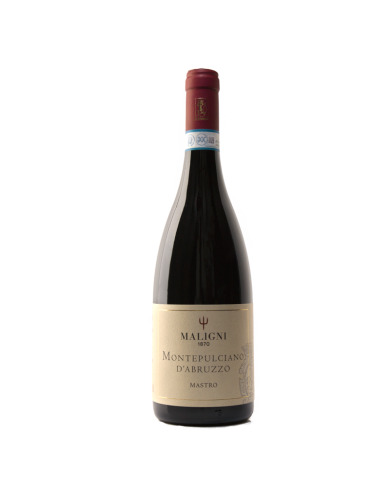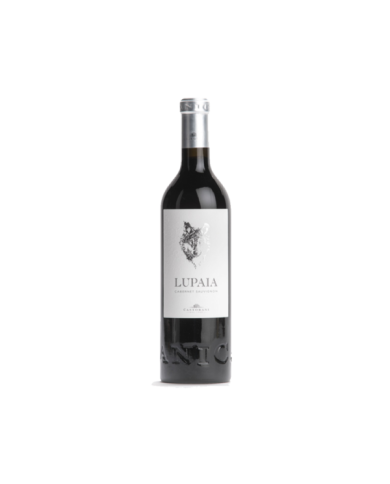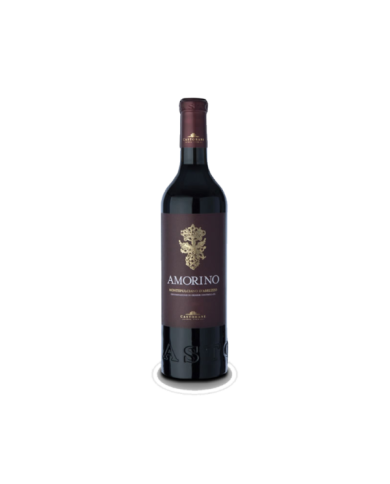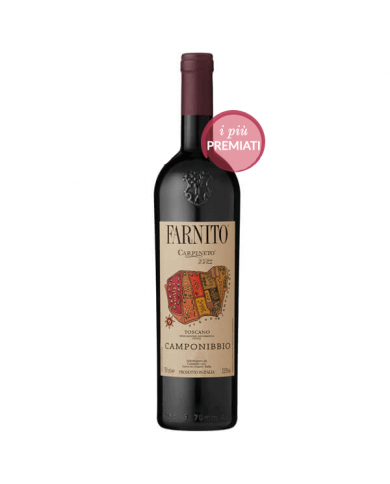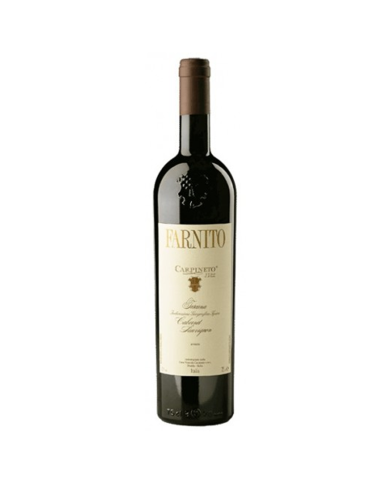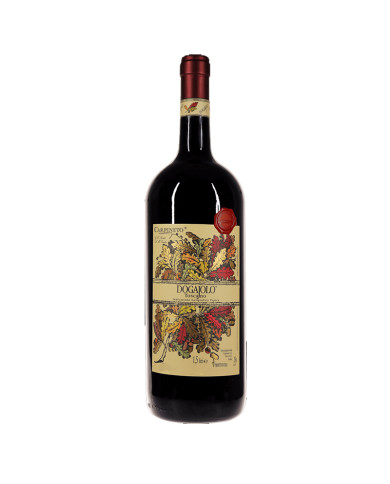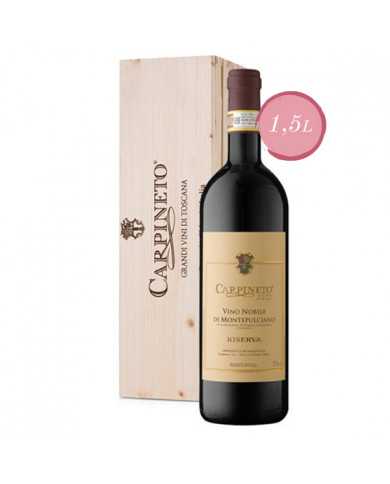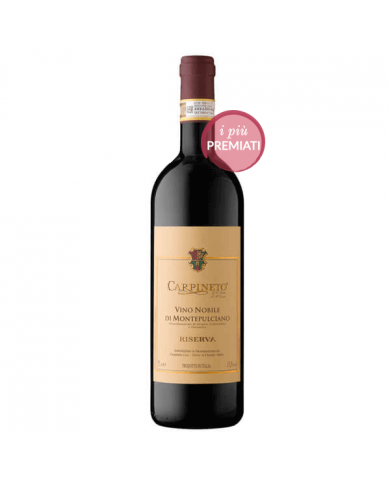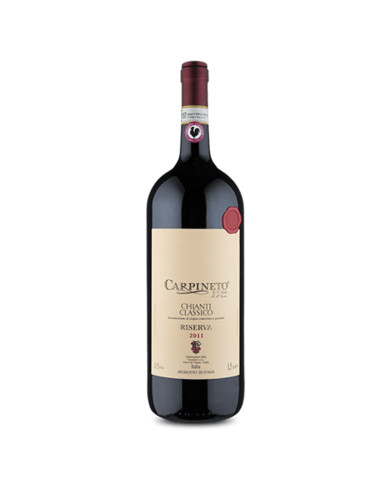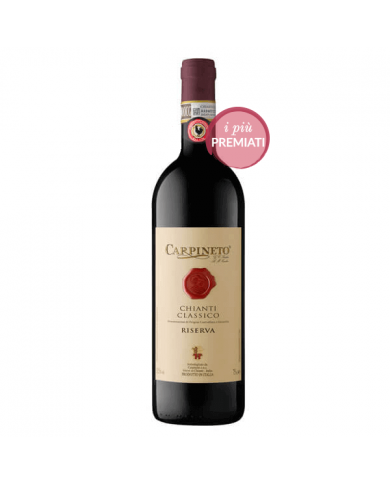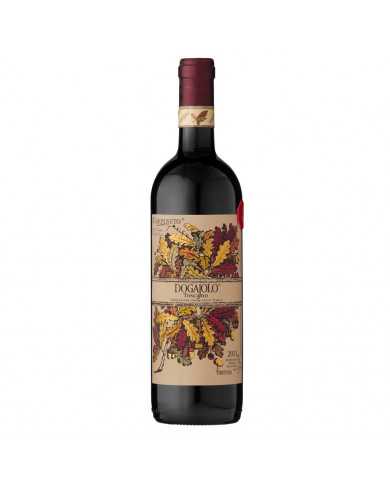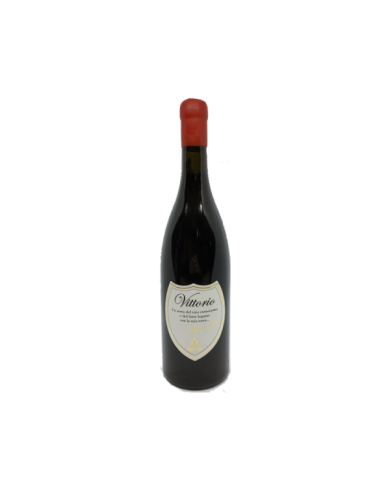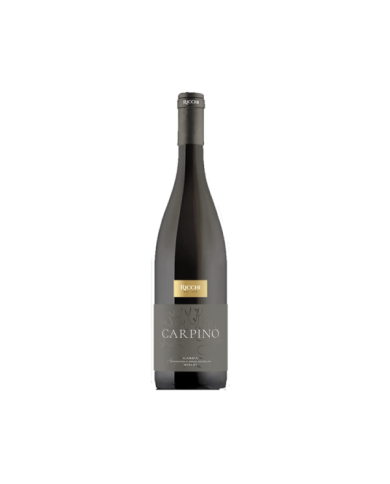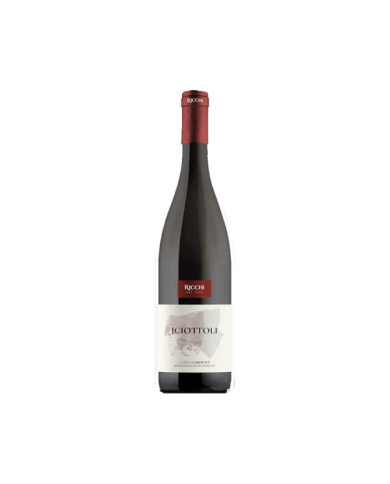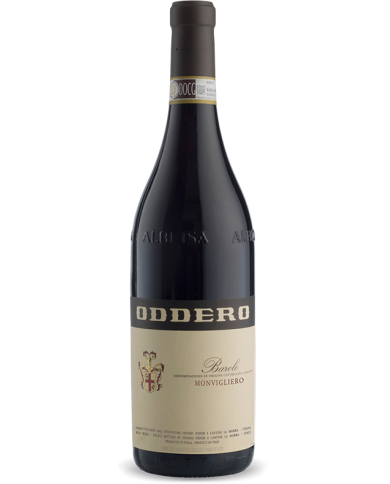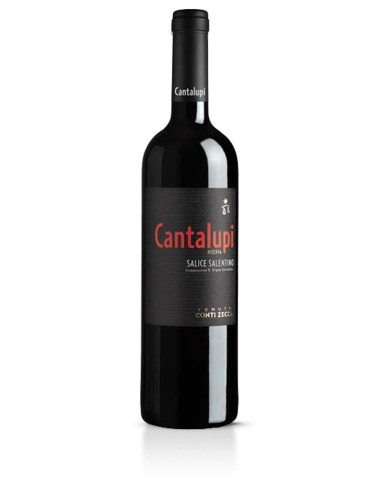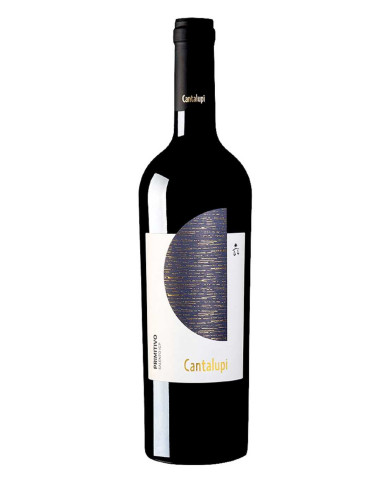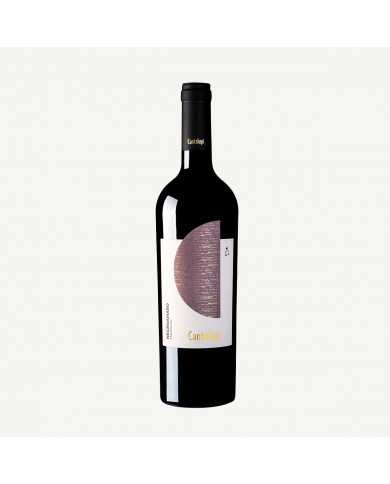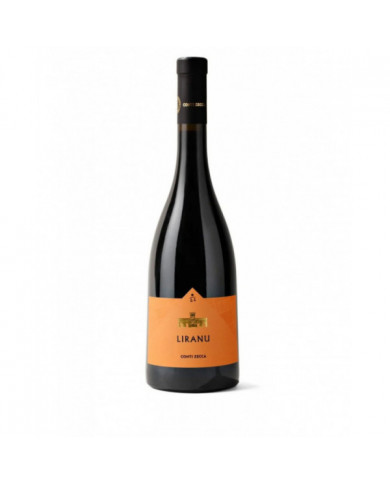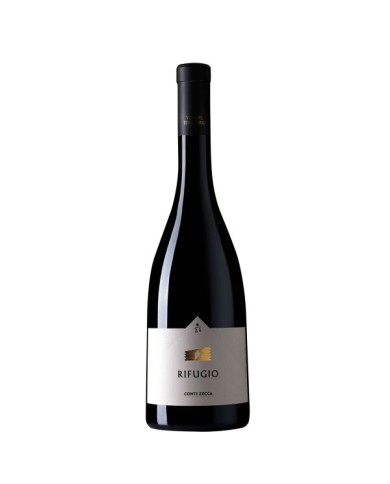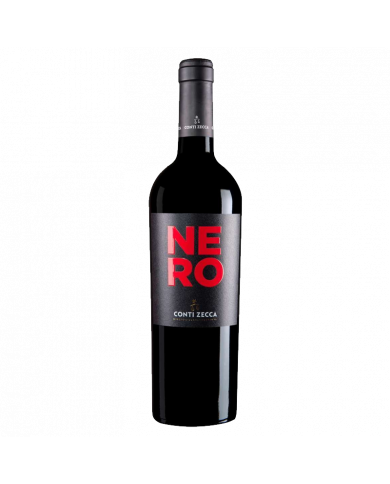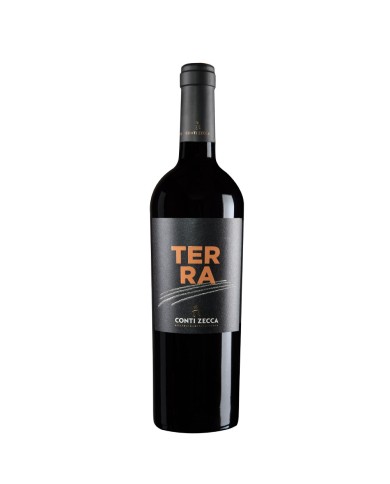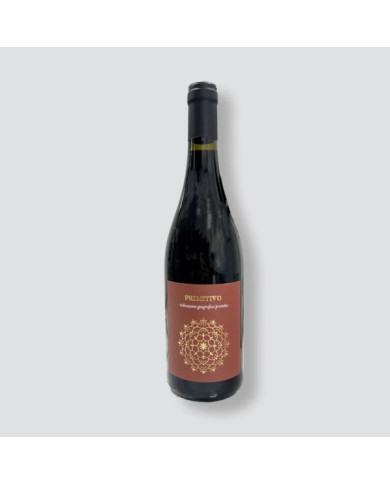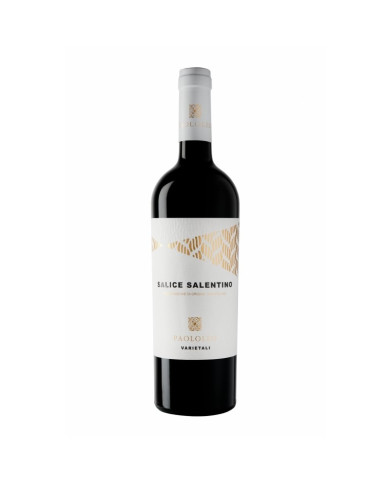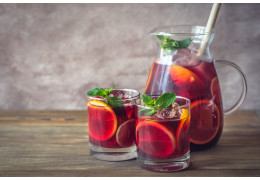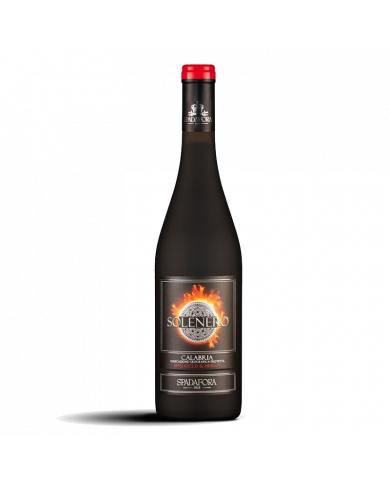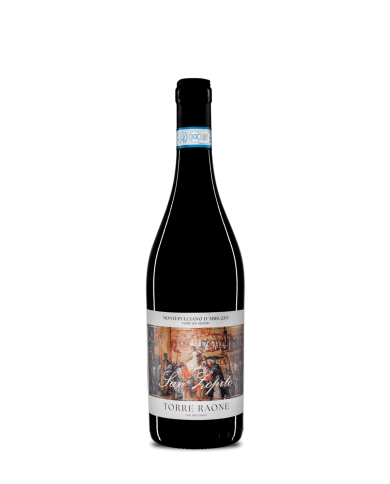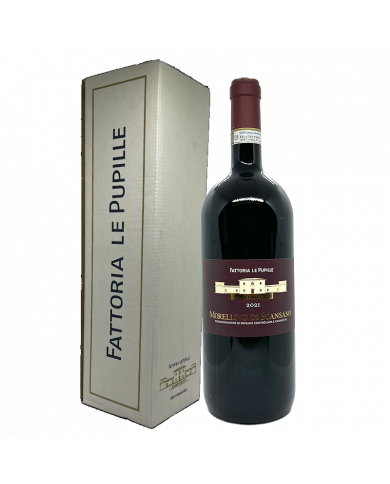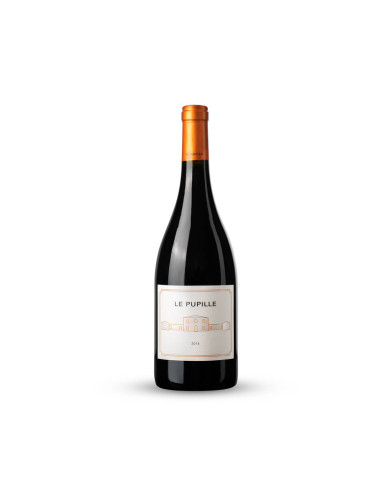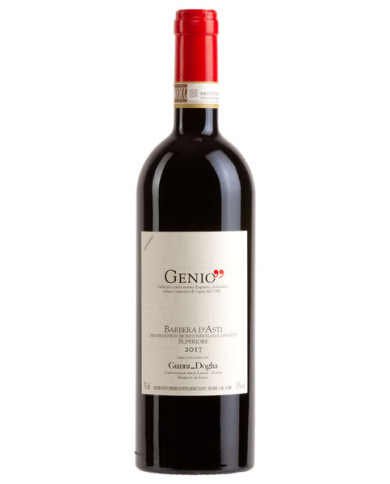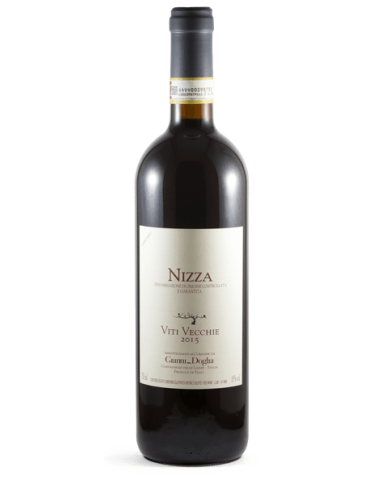Mastro Montepulciano d'Abruzzo DOC by Cantine Maligni is obtained from Montepulciano grapes grown on medium-textured clayey soils, in the municipality of Chieti in a planting with 1600 vines per hectare. It is vinified with destemming, crushing of the grapes and maceration with the skins for 15 days. After racking, it is aged in steel for 12 months.
Camponibbio is a large vineyard located at high density located in the southern part of our company of Chianciano in the province of Siena. It is divided into nine plots in which different vines are grown in different clones. Each harvest, the grapes of the varieties that have responded best to the seasonal trend are chosen. The blend essentially, made up of Sangiovese, Cabernet Sauvignon and Merlot, varies year by year, in percentages and varieties.
Produced with grapes from vineyards of the companies of Gaville (Florence) and Chianciano/Montepulciano (Siena), the latter planted at high density and considered by us to be particularly happy and suitable for producing great wines.
Produced with grapes from vineyards of the companies of Gaville (Florence) and Chianciano/Montepulciano (Siena), the latter planted at high density and considered by us to be particularly happy and suitable for producing great wines.
Produced with grapes from vineyards of the companies of Gaville (Florence) and Chianciano/Montepulciano (Siena), the latter planted at high density and considered by us to be particularly happy and suitable for producing great wines.
Dogajolo is certainly one of the most innovative wines produced today and we, as Azienda Carpineto, have the honor of having created it. All those characteristics that are most appreciated in wine are enclosed in him: the strength of youth, the maturity of the wood, the softness of the class, the fruity and fragrant aromas, the lively and deep colors.
A great red wine, it takes its name from Montepulciano, a Renaissance city in the province of Siena, which dominates the wide and verdant Valdichiana from the top of a hill. The appellation of "Nobile" seems to derive not only from its intrinsic qualities of finesse and elegance, but also from the fact that in the past the production of this wine was particularly cared for by the noble families of the city.
A great red wine, it takes its name from Montepulciano, a Renaissance city in the province of Siena, which dominates the wide and verdant Valdichiana from the top of a hill. The appellation of "Nobile" seems to derive not only from its intrinsic qualities of finesse and elegance, but also from the fact that in the past the production of this wine was particularly cared for by the noble families of the city.
Great red wine. It takes its name from Montepulciano, a Renaissance city in the province of Siena which dominates the wide and verdant Valdichiana from the top of a hill. The appellation of "Nobile" seems to derive not only from its intrinsic qualities of finesse and elegance, but also from the fact that in the past the production of this wine was particularly cared for by the noble families of the city.
Great red wine. It takes its name from Montepulciano, a Renaissance city in the province of Siena which dominates the wide and verdant Valdichiana from the top of a hill. The appellation of "Nobile" seems to derive not only from its intrinsic qualities of finesse and elegance, but also from the fact that in the past the production of this wine was particularly cared for by the noble families of the city.
Chianti Classico Riserva is produced exclusively in the oldest wine-growing area of Tuscany, in a landscape of breathtaking beauty.
Produced in the oldest production area, as stated in the disciplinary that regulates it, this area gave its name to the wine and is the only one where Chianti Classico is produced. It extends between Florence and Siena in a territory of breathtaking beauty, made up of villages perched on the top of the hills, of olive trees cultivated in steep fields with an irregular outline and of cypresses lined up to delimit the innumerable dirt roads.
This is certainly one of the most innovative wines produced to date. It contains all those characteristics that are most appreciated in wine: the fruity and fragrant aromas, the lively and deep colours, the strength of youth, the maturity of the wood, the softness of elegance.
The Chianti Riserva "Nipozzano Vecchie Viti" comes from 40-year-old vines from the Rufina area. It is an intense, full-bodied, elegant and persistent wine, animated by hints of berries, pepper, cinnamon and other sweet spices. It ages for 24 months in oak barrels
Art that bestows emotionsŌĆ” Power, vigor, elegance, an emblematic summary of all its complexity.
Bold and decisive wine but its aromatic soul blends in a fascinating symbiosis with soft and full aromas.
Salice Salentino DOP Cantalupi is produced with Negroamaro and Malvasia nera di Lecce grapes from spurred cordon cultivated vines on alluvial soils, medium texture with areas tending towards limestone. The harvest takes place by destemming and soft pressing. Fermentation in stainless steel tanks at controlled temperature. Maceration for 12 days at a temperature of 28-30┬░C. Aging for at least 12 months in hl oak barrels. 30.
In the glass it has a beautiful ruby red color, very concentrated. The vegetal notes discreetly face the nose, where it is then enveloped by an iridescent fan, between fruity and spicy. When tasted it has a good structure, with a warm and enveloping sip. Wonderful with cannelloni with sheep's sauce.
In the wide and varied range of labels of the Conti Zecca winery, the wines made with native single grape varieties stand out for importance and interest. The company is investing considerable energy in this direction.
This wine takes its name from an underground hiding place, where the locals found shelter during dangerous situations. The entire farm took on the name of Rifugio, which today is a particularly suitable area for the cultivation of fine Primitivo grapes.
Every year the "Nero" of the Conti Zecca winery reaches the "finals" in the judgments of the most renowned wine guides, obtaining scores that, if they do not exceed 90 cents, are punctually very close. This year too is no exception. It is a wine that follows a long aging: it ages 18 months in French wooden barriques, one year in large oak barrels and six months in bottle.
The Aglianico Salento PGI "Terra" from the Conti Zecca winery is a ruby red wine. Notes of wild berries, tobacco and vanilla emerge on the nose. The flavor is enveloping and harmonious with soft tannins. Before being bottled, it is aged in barriques and oak barrels.
Red wine with a ruby red color with violet reflections; scent of undergrowth with red fruits and wild berries; dry, balanced, full-bodied palate. Nice acidity and soft tannins, persistent. Ideal pairing with roast meats and fresh cheeses.
In the glass it has a beautiful ruby red color, very concentrated. The vegetal notes discreetly face the nose, where it is then enveloped by an iridescent fan, between fruity and spicy. When tasted it has a good structure, with a warm and enveloping sip. Wonderful with cannelloni with sheep's sauce.
THE BEST ITALIAN RED WINES
In this section of our online wine shop Clickwine you can find the best Italian and foreign reds for sale, ideal for accompanying everyday dinners or important events with style and elegance. Clickwine has selected the most famous reds on the wine scene including the best denominations as well as some niche products and some wines from Abruzzo that will amaze the most curious enthusiasts. Among the best wines, the red wines of Abruzzo cannot be missing.
One of the best Italian wines is undoubtedly Montepulciano d'Abruzzo DOC, which is one of the best known Italian red wines in the United States.
Montepulciano is the most widespread red grape variety in the Marches and Abruzzo, where rich and expressive red wines are born, ideal for sharing with those who love tasty home cooking, and it is also perfect for a barbecue with friends.
THE PRODUCTION OF RED WINE
The red wine is obtained from red berried grapes, thanks to a production process which takes the name of "vinification in red". This process involves the contact between marcs (husks and seed residues) and wort during the fermentation phase
One of the first steps in the production of a red wine consists in choosing the harvest period. The grapes are harvested when the sugar level reached is what the winemaker deems necessary to produce the desired alcohol content.
After harvesting, the bunches arrive in the cellar where the stalk is removed (stemming) before the grapes are pressed to obtain the must.
Maceration causes the release of polyphenols from the skins and in particular anthocyanins, from which derives the red color of the must. The tannins, on the other hand, derive from the grape seeds. The duration of the maceration is about 10-15 days.
In the meantime the alcoholic fermentation starts, triggered by the yeasts present in the skins or by added yeasts. This natural process is favored by an increase in temperature, which however must be kept between 25 and 30┬░C in order not to affect the quality of the wine.
During this process it is possible that the pomace forms a surface layer which, by preventing contact with the liquid part, could lead to the development of acetic acid. However, various techniques are available to winemakers to remedy this problem.
After alcoholic fermentation, malolactic fermentation takes place, i.e. the transformation of malic acid into lactic acid. It is an essential moment for the vinification of red wines because it increases their softness and smoothes out their sharp edges and hardness.
The must has now been transformed into wine, but racking is therefore necessary, i.e. the elimination of residues, to be carried out by filtration or static settling. This last method, less invasive, consists in lowering the temperature in the tanks so that the substances to be eliminated settle on the bottom.
Once "cleaned", the wine is ready for refinement, lwhose minimum duration is established by the DOC regulations, which can take place in steel, in cement tanks, in large capacity barrels or in small barrels or barriques. At the end of the maturation phase, the bottling takes place: the wine begins its refinement in the bottle and, after another possible rest in the cellar, it is put on the market.
RED WINE: PROPERTIES AND BENEFITS
Is red wine good for health? Many people ask themselves this question to which the numerous studies have not yet given a definitive answer. Many studies affirm some properties, others deny it. Below we list the most widespread beliefs about the properties and benefits of red wine, which, as mentioned, are not certified by the medical community in an absolute sense. You can believe it or not.
- Natural antioxidant: the polyphenols contained in red wine are antioxidant substances that would slow down the aging of some cells
- Promotes digestion: would protect the intestinal flora
- Increase endorphins: in small doses it helps the brain release endorphins and would make us feel more relaxed
- Prevents cardiovascular diseases: thanks to the resveratrol which would promote blood circulation
- Many authoritative studies state that the substances contained in red wine have these properties and benefits, but are present in such small doses that they are absolutely irrelevant for the body.
HOW MUCH DOES RED WINE COST?
The prices of red wines can fluctuate based on various factors, including the value of the bottle, the production area and the demand. The online wine shop Clickwine offers a wide selection of Italian red wine offerings. Our online wine shop offers alongside the most famous names, also cheaper labels suitable to accompany everyday life. Fromforget about running from one shop to another, but save time for the really important things: enjoying an excellent glass of red wine. Scroll through our products to find the best red wines at the best price.
PAIRINGS WITH RED WINE
Browsing the individual product sheets in our online wine shop, you will discover the suggested pairings for each red wine: white and red meats, game, braised meats, grilled meats, risottos, traditional Italian first courses but also cold cuts and cheeses, vegetables, sauces and structured dishes .
How should a good red wine be?
How long can a red wine stand?
How can it be red wine?
Why can't red wine be refrigerated?
Why is drinking red wine good for you?
Who can't drink wine?
- Women who are pregnant or breastfeeding, as alcohol can pass through the placenta and into breast milk, endangering the health of the fetus or newborn.
- People who suffer from alcohol addiction or who have problems with alcoholism, because the consumption of wine can worsen their state of health.
- People taking medications that can interact with alcohol, such as antidepressants, pain relievers, or heart medications, because alcohol can increase the side effects of medications.
- People who have health problems, such as liver disease or gastritis, because alcohol can worsen symptoms and aggravate health conditions.
In any case, it is always advisable to seek advice from your doctor or pharmacist before consuming wine or other alcohol.

